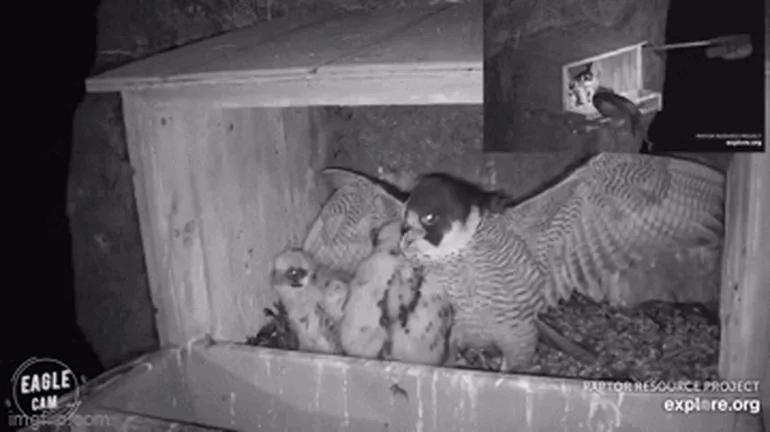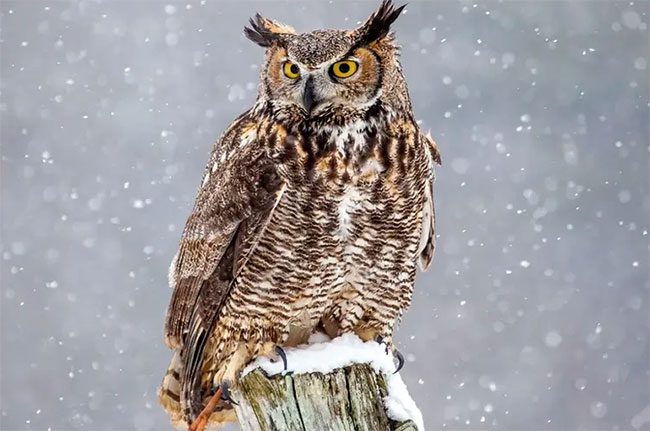The Great Horned Owl, known as the “silent assassin,” possesses the ability to fly and attack without making a sound, making it a formidable predator to young hawks.
The video captured by an infrared camera shows a Great Horned Owl unexpectedly swooping in to seize a young hawk that was sheltered in its nest, much to the surprise of the mother hawk.
In the footage, it is evident that the mother hawk, lacking night vision, was unable to foresee the attack. It even mistook the remaining chick for a threat and clutched it tightly with its talons. Only later did the hawk realize its nest was under attack and began to emit warning calls.
After a while, once the mother and chick hawk had calmed down, the owl returned with the intention of capturing the remaining chick. However, this time its attempt was thwarted by the mother hawk.
Using its sharp talons, the hawk seized the predator and pushed it away from the nest. However, the mother hawk also lost balance and fell outside.
After the owl’s fierce attack, the fate of the mother hawk and the remaining chick remains uncertain. However, given how easily the nest was attacked, the owl is likely to return at any moment, ready to claim the life of the hawk if they are fortunate enough to survive this encounter.

Close-up of the Great Horned Owl’s attack on the hawk’s nest at night.
The owl’s swift attack immediately claimed the life of a young chick, leaving the mother hawk in shock.
The Great Horned Owl (Bubo virginianus) is one of the most common owl species in North America. They can be found in a variety of environments, including forests, swamps, deserts, tropical rainforests, cities, suburbs, and parks.
Unlike most raptors, the Great Horned Owl has adapted to a nocturnal lifestyle, with large eyes and widely dilated pupils. This allows the owl to detect its prey even in the darkest of nights—something that hawks cannot do.
The feathers of the Great Horned Owl are also very soft, along with a unique design that enables them to approach their prey without making any noise.

The beauty of the Great Horned Owl.
The diet of the Great Horned Owl is quite diverse, ranging from small rodents to skunks and geese. Like other owl species, they occasionally swallow their prey whole, later regurgitating indigestible parts such as bones, feathers, and other materials.
Contrary to their cute appearance, Great Horned Owls are fierce predators. They frequently ambush and attack larger prey, including other raptors in the same area such as osprey, large falcons, and some other species.




















































